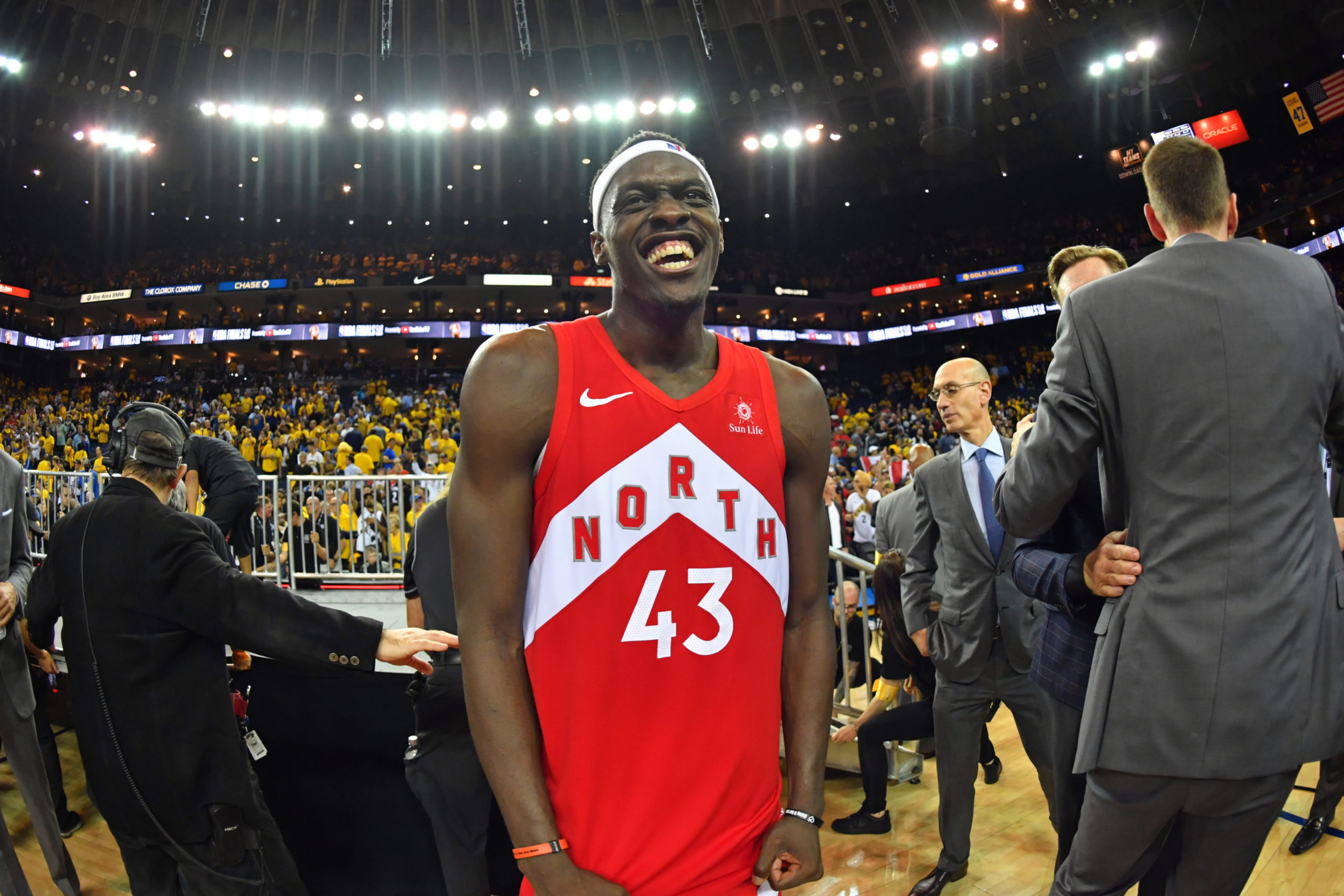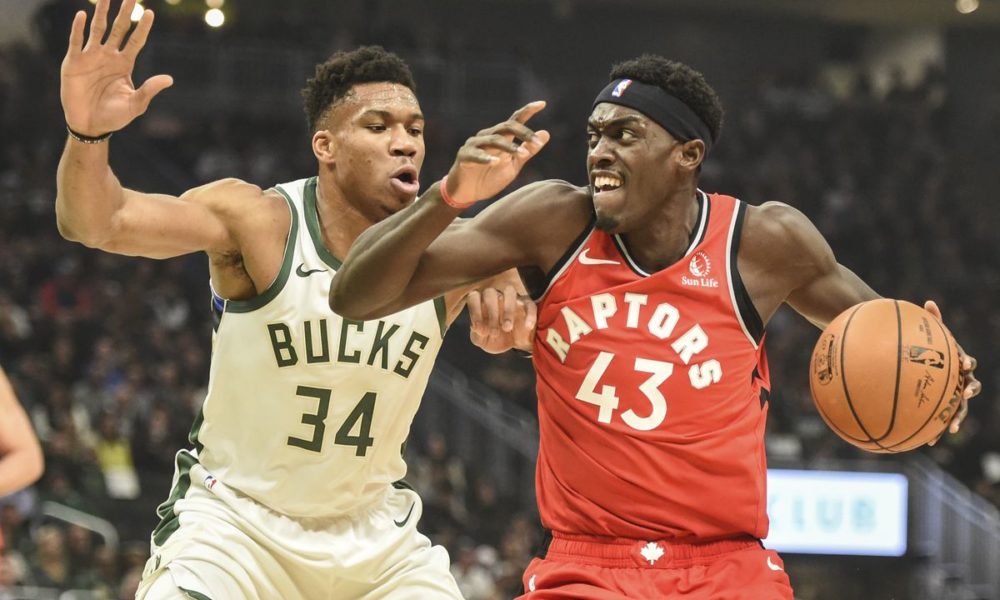Beth Harmon lost the first chess game she played against a world-class opponent. It took place against Benny Watts at the fictional 1966 US Championship, and Harmon focused on the wrong details — on doubled pawns in the middle of the board — and was eventually squeezed into a positional loss. Aside from providing captivating television, Netflix’s The Queen’s Gambit taught an important lesson through Harmon’s loss to Watts. Harmon wasn’t mentally ready for the game. She looked past Watts to future games. She mistreated her body. Thus she lost to an inferior, cowboy-hat-wearing opponent.
Pascal Siakam experienced something similar in the NBA bubble, albeit without any cowboy hats in sight. He wasn’t focused on basketball. He played poorly. And as his struggles continued, he enjoyed himself less and less, further deepening his troubles. On a zoom call with collected media, he spoke openly about his state of mind and how it led to his poor basketball showing.
“The world is crazy right now,” said an uncommonly reflective Siakam. “I mean there’s so many different things that we all have to deal with as individuals, and I think it was no different for me. Just dealing with different things from the virus, to just all the things that are going on the world. Family problems, to like everything, it was just a lot of things, just in place, and I didn’t, I wasn’t, I didn’t feel like I was where I wanted to be, physically and mentally.”
“It was weird watching myself… I didn’t recognize myself, in terms of just having fun. I’m always somebody that has fun playing the game, and I love this game, and I don’t never want to be able to play the game without any joy.”
“I’m in a good place right now, I feel happy, excited about the future and I just feel like I have that joy again.”
The point? Get ready for carnage.
Though Siakam was not himself in the bubble, he remained a brilliant defender, not letting his offensive struggles impact the other side of the ball. But his offense did dip. His touch wasn’t there. For a player who relies more on his touch and feel for the game than his elite athleticism, that meant a huge number of misses around the rim. And he had been automatic at the rim during his whole career. The numbers are stark. Over his entire regular season career, Siakam has shot 61.3 percent from within 10 feet — an incredible mark that represents both his finishing ability as well as his remarkable touch on floaters, push shots, and short-range jumpers and hooks. In the 2019-20 playoffs, that number sunk to a subpar 49.5 percent.
Siakam’s bread and butter became his moldy toast.
And that can’t be attributed to good defense. Not entirely. Not when Siakam was missing shots like this.
Give Jaylen Brown all the credit in the world for his work on Siakam, but Siakam’s struggles have to start and end with Siakam himself. Fortunately, that offers optimism: there’s no reason to expect such a drop-off to continue. No, instead we should expect to see a return of the world-eater Siakam, who was regularly doing things like this before the NBA went on hiatus.
Players don’t just forget how to be themselves. And Siakam was a bonafide All-NBA Second Team star last season. If he has returned to himself, rediscovered his joy, then this upcoming season could well be his best yet. Siakam himself said he’s in a better mental place already to begin the year. And those around him can see the change manifesting itself in his game.
“Just seeing Pascal the past couple days here, I know it’s going to be different,” said Masai Ujiri. “He’s back enjoying himself.”
Nick Nurse agreed when I asked him about Siakam’s demeanor during the first days of training camp: “I’m glad he said that he’s feeling more like himself, because he certainly looked good to me. He looked like his old chipper self to me.”
The thing is, there’s a lot more in store for Pascal Siakam. Don’t forget that Siakam has grown by leaps and bounds every season of his career, even before he entered the NBA. There are plenty of rough edges still to his game, and Siakam has never been the type to be satiated. I asked new assistant coach and reputed offensive mastermind Chris Finch about Siakam. He offered plenty of praise, as well as suggestions about how to better use Siakam going forward.
“I think he’s extremely dynamic,” said Finch. “I think we can probably generate some more playmaking from him. You saw in the bubble what a crowd he is going to draw. And let’s be honest, that’s when we’re trying to be good, at the end of the season when it matters most. So creating offense for his teammates. If you can get two on the ball you are getting an advantage pretty much everywhere else. I think these are things we can use to our advantage with him, rather than just kind of [being] a great scorer, which he has been able to become in all kinds of different capacities.”
The point about diversifying Siakam’s offensive menu is a significant one. In Siakam’s first season as a primary offensive creator, the team did not make things easy on him.

All stats taken from nba dot com advanced stats.
All of those numbers point to one consistent element in Siakam’s offensive game last year: predictability. The offensive sets he ran were static. He didn’t run in transition, cut off the ball, or move off screens. He held the ball for longer and took more dribbles than ever before. Instead of allowing others to create for him, he attacked set defenses and launched pull-up jumpers over ready defenders. None of that is conducive to ease of scoring.
Fortunately, the Raptors are planning on addressing that issue.
“To me,” said Finch, “the most important thing [in NBA offense] right now is to be highly unpredictable.”
“I think also [we need to start] finding new opportunities for the likes of Pascal to score, or put the ball in [his] hands to create opportunities for his teammates, a little more unpredictability there, maybe some misdirection, some things.”
There is plenty the Raptors can do to vary Siakam’s touches. He can play any position, so the options are endless. He can play more in the pick-and-roll, both as screener and roller. Toronto can use him in more complex variations of the action; they’ve run the Spain pick-and-roll to great effect with Lowry especially setting backscreens. So too did Toronto run Chin pick-and-rolls especially effectively with Kawhi Leonard making decisions in 2018-19. Those are a few examples, but the concept is portable: use multi-pronged actions, threatening multiple sides of the floor. Let Siakam function as initiator, finisher, and even decoy. Giving Siakam diverse touches in varied like those, in multiple roles, would keep the team less predictable. Allow improvisation to return to his game; Siakam established himself as a premier cutter in his first few years in the league, and getting him back to his roots there would offer some low-effort, high-efficiency baskets to the star.
Unpredictability, dynamism, and offensive movement will allow Siakam to see more of the defensive structures he saw in 2018-19 rather than 2019-20. He’ll attack more rotations, more switches. He’ll catch more often on the move. He’ll have to create less for himself. And not unrelated: his true shooting percentage in 2018-19 was a sky-high 62.8. Corresponding with Toronto’s shift towards using Siakam in static sets in 2019-20, his true shooting percentage dropped all the way to 55.4. Solid, if unspectacular, for a primary option, but certainly not the pinnacle of efficiency that Siakam achieved previously.
So Siakam must return to himself, of course, to become the star he was last year. But for him to improve, the team needs to vary how Siakam is used on the offensive end. This is the key point that Finch recognized.
The incoming offensive mastermind likened Siakam to star offensive initiators like Brandon Ingram, Giannis Antetokounmpo, and even James Harden. The similarity in those seemingly disparate names is that all three players draw multiple types of defenses and defenders, while bending defensive structures just by being on the court.
“[James Harden’s] growth was impressive but he had to learn through these experiences what he needed to now do and then use the defense basically against itself and kind of not fight the game, which is something I am a big, big proponent of,” said Finch. “Don’t fight the game, and make it easier for yourself and your teammates.”
At times, Siakam fought the game last year. That was especially true in the bubble. If Siakam takes dynamism and unpredictability to heart, and the offense allows for it, then the NBA will be in for a comeback tour of immense proportions. Comeback tour may be the wrong phrase, considering the magnificence of Siakam’s last season, but criticism reached a fevered pitch during his lackluster bubble performance. After winning Most Improved Player of the Year, an NBA Championship, and a spot on the All-NBA Second Team, Siakam has since been discounted by many around the league, fans and pundits alike. It was perhaps the first time he has received extensive criticism. It hasn’t affected his process.
“I don’t think anybody could be more disappointed than I was,” said Siakam, “so I don’t think I listened to anybody. I don’t really care — it’s not that I don’t care — it’s that I know myself, and I’m such a hard worker, and I put so much into the game. Obviously I know a lot of things went wrong and I wasn’t excited about it, but I think for me, people talking about whatever doesn’t really matter.”
Ultimately, a few poor weeks of play in Orlando during a time when Siakam admits to struggling mentally do nothing to discount his long history of success. Furthermore, the team seems bent on finding easier structures within which Siakam can succeed. Even if Siakam doesn’t improve on his year last year, he’ll come out of the gates roaring. And Siakam has always found ways to improve.
Beth Harmon roared out of the gates after her loss to Benny Watts, too. She regrouped, improved her mental state, and butchered Watts in the rematch. She became a better blitz player, better simul player, better classical player. Improvement, combined with better health, allowed her to achievement the highest of heights. All signs points towards Siakam following in her footsteps.



